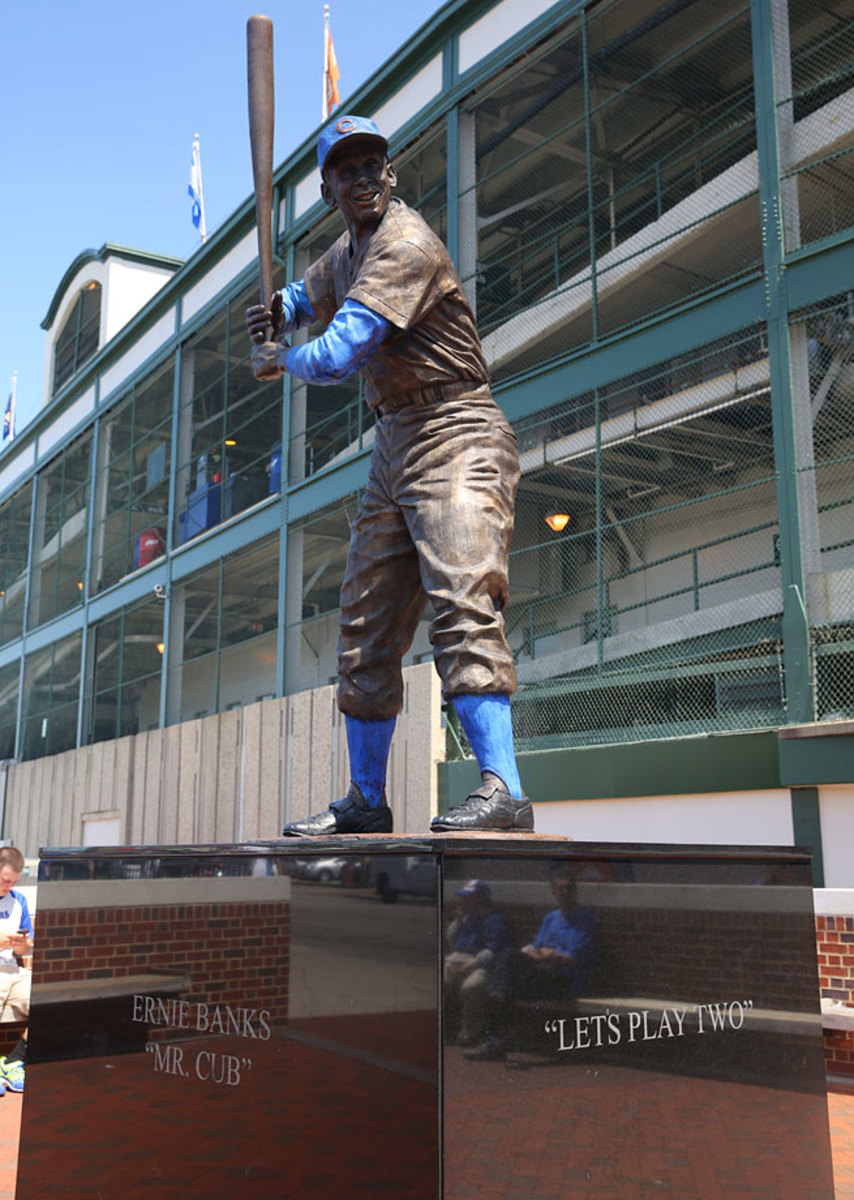Ernie Banks' place in baseball history goes far beyond 'Let's play two'

For generations of baseball fans, Ernie Banks, who passed away Friday night eight days shy of his 84th birthday, was simply Mr. Cub, a gentle, ever-smiling old man who could easily be coaxed into parroting his catchphrase, “Let’s play two,” the iconic expression of his bottomless enthusiasm for baseball and life. To National League pitchers in the late 1950s, however, he was something far more menacing. Banks may be most often remembered as a sweet old man, but what must not be lost in that image is the fact that, at his peak, he was one of the best hitting shortstops ever to play in the major leagues.
That Banks ever did reach the majors is an important part of his story. Born in Dallas in 1931, he grew up in the segregated South, the second-oldest of a dozen siblings. Encouraged to play baseball by his father, who played in local semi-pro leagues, Banks was signed by out of high school by the Kansas City Monarchs of the Negro American League. Almost immediately, he was drafted into the Army and stationed in Germany during the Korean War. It wasn’t until the age of 22 that Banks’ baseball career started in earnest, back in Kansas City with the Monarchs, but his talent was readily apparent. On Sept. 17, 1953, he became the first African-American player in Chicago Cubs history.
Where Are They Now: Catching up with Cubs legend Ernie Banks
Banks was the Cubs’ starting shortstop for the final 10 games of the 1953 season and started all 154 games there each of the next two years. In 1954, he finished second to the Cardinals' Wally Moon in the National League’s Rookie of the Year Voting, but that was hardly an indication of what was to come. In '55, at the still-tender age of 24, Banks exploded, hitting .295/.345/.596 (144 OPS+) with 44 home runs and 117 RBIs, making his first All-Star team and finishing third in the Most Valuable Player voting despite the Cubs’ sixth-place finish. That would have been an outstanding season for any 24-year-old hitter, but Banks wasn’t just a slugger, he was a shortstop, and his 44 home runs that year were more than any man at that position had ever hit in the major leagues, breaking by five the record set by Vern Stephens in 1949.
That '55 season was the first of six straight in which Banks rated among the best hitters in the game, regardless of position. From 1955 through '60, he hit a combined .294/.359/.579 (148 OPS+), while averaging 41 home runs and 116 RBIs per season. His totals of 248 homers and 693 RBIs over those six seasons were the best in the majors, topping in-their-prime stars such as Hank Aaron, Willie Mays and Mickey Mantle. Banks did that while not just occupying shortstop, but also excelling at the position. Total Zone credits him with being 10.2 wins above replacement at short over those six seasons, and he won a Gold Glove in 1960. The combined impact of his contributions at the plate and in the field resulted in Banks winning consecutive NL MVP awards in 1958 and ’59, despite the fact that Chicago finished tied for fifth with a losing record in both seasons.
It’s nearly impossible to determine which of those two MVP campaigns was greater. In the first, his age-27 season, Banks hit .313/.366/.614 (155 OPS+) with 47 home runs and 129 RBIs, leading the NL in slugging and the majors in home runs, RBIs and total bases (379). The next year, he hit .304/.374/.596 (156 OPS+) with 45 home runs and 143 RBIs, leading the majors in RBIs and intentional walks (20). Those 47 home runs in '58 set a mark for longballs by a shortstop that no one outside of the admittedly juicing Texas Rangers-era Alex Rodriguez has even approached. In fact, aside from Banks and Rodriguez, the only other shortstop in major league history to hit even 40 home runs was Boston’s Rico Petrocelli in 1969. Banks, meanwhile, topped 40 home runs five times in six years from 1955 to '60 and did so in each of the final four seasons in that stretch.
Chicago Cubs legend Ernie Banks dies at 83
Banks played in every game in six of the seven seasons from 1954 to '60, and that began to take its toll on his body as he reached his 30s. In 1961, his age-30 season, a left knee injury he had suffered while in the Army flared up on him, causing him to move to leftfield in late May, to first base in mid June and to finally pull himself from the lineup on June 23, snapping his streak of consecutive games played at 717. He didn’t play again for seven days, then missed nine more games in late July. By the following season he had been permanently relocated to first base.
Though he would continue to make sporadic All-Star appearances throughout the remainder of his career, padding his total to 14 thanks in part to the fact that there were two games annually from 1959 to '62, he was never again the same impact player. Having compiled a staggering 19.6 WAR in his two MVP seasons, per Baseball-Reference.com’s numbers, in his eight seasons as the team's starting first baseman he compiled just 13.6 WAR. In those years he hit .260/.307/.450 (107 OPS+), though he did become just the ninth man in baseball history to reach 500 home runs, doing so at the age of 39 in 1970, his penultimate year in the majors.
The long tail to Banks’ career did nothing to diminish the fans’ fondness for him, however, and should in no way lessen the brilliance of his peak. The 47.3 WAR he compiled from 1955-60 stands as the second most ever by a shortstop in that many consecutive years, outpaced only by Honus Wagner’s otherworldly peak, which concluded in 1912. Banks’ peak JAWS score (the total WAR of his seven best seasons, regardless of sequence) is the fourth best among shortstops all-time behind those of Wagner, Rodriguez and Cal Ripken Jr.
A deserving first-ballot Hall of Famer, Banks was inducted on schedule in 1977 and spent the final four decades of his life as one of the great ambassadors for the game. His place in baseball history need not be confined to catchphrases and sentimentality, however. Ernie Banks may never have played in a postseason game, but his legacy starts with the impact he had on the field as one of the greatest all-around shortstops the game has ever seen.
Classic SI Photos of Ernie Banks
1955
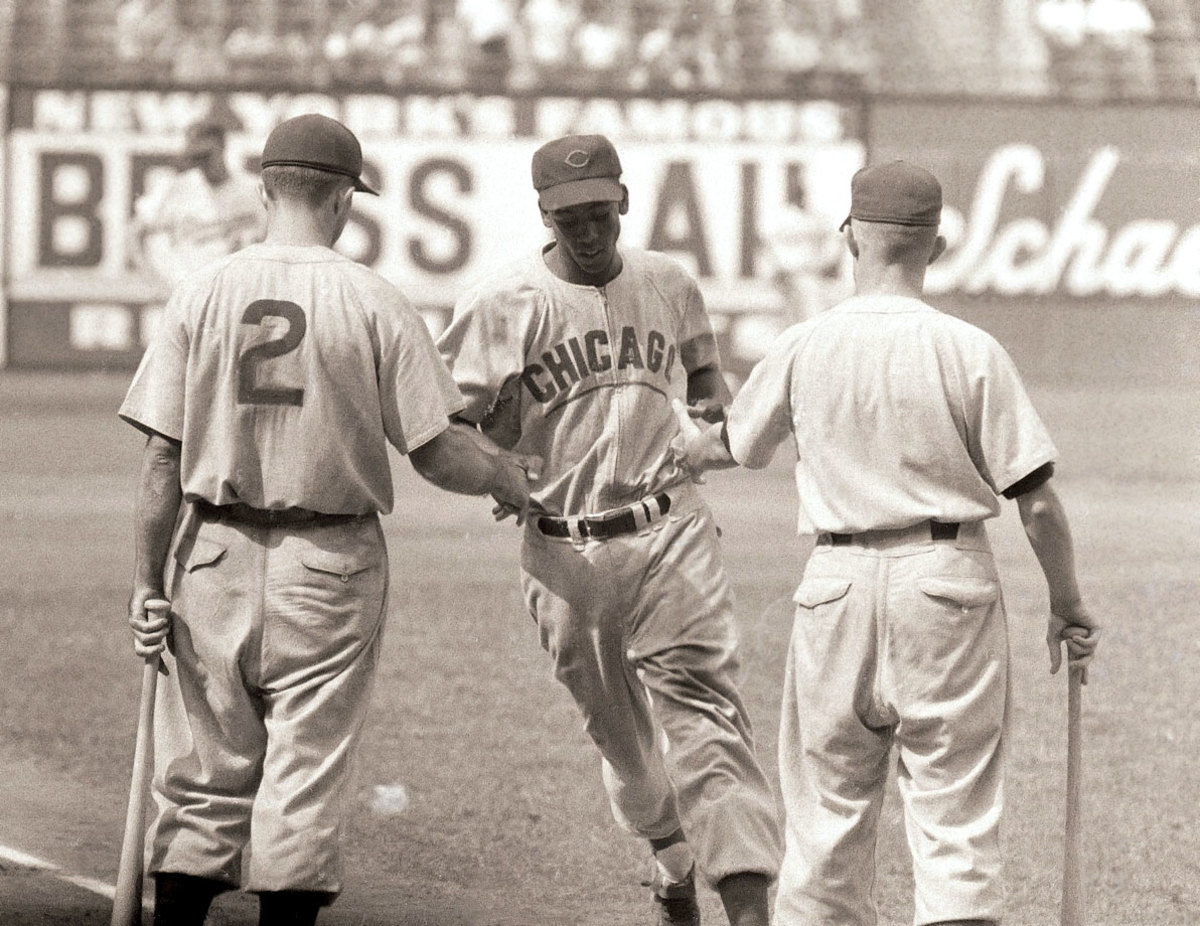
1955
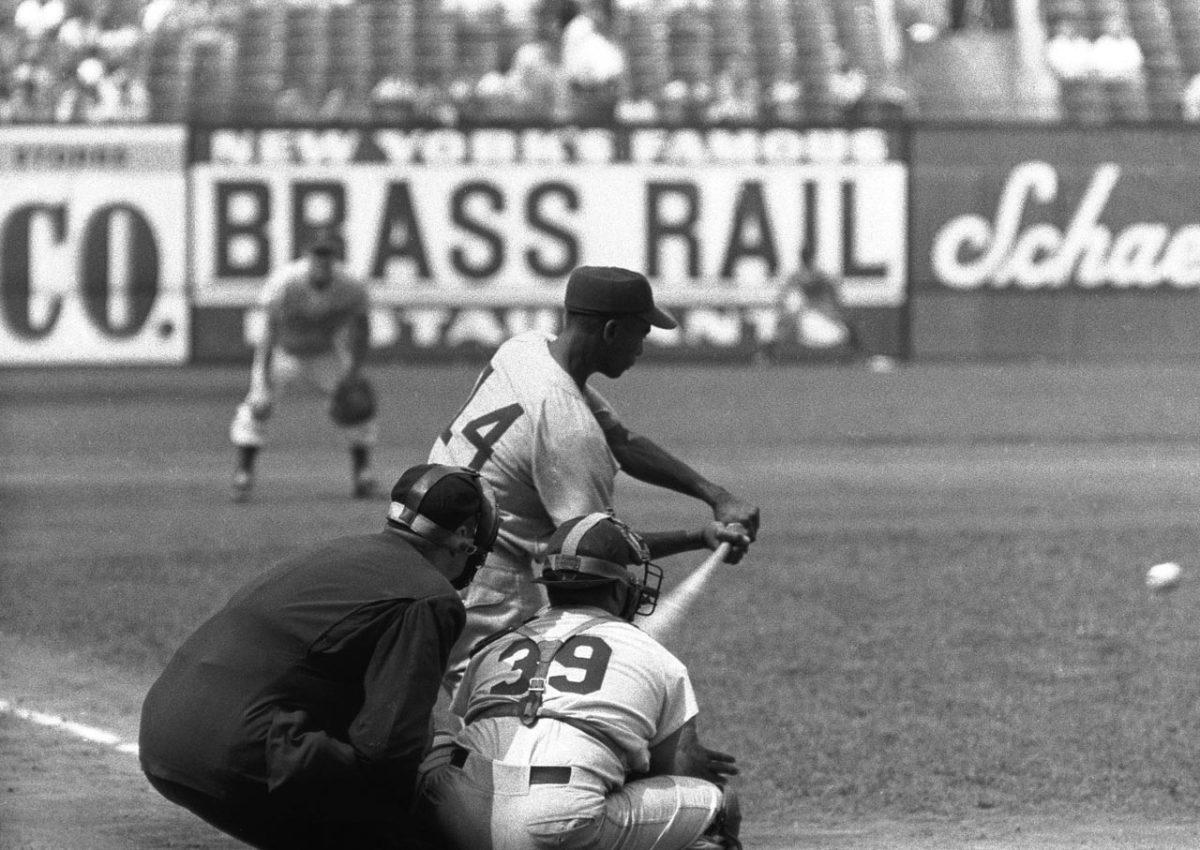
1955
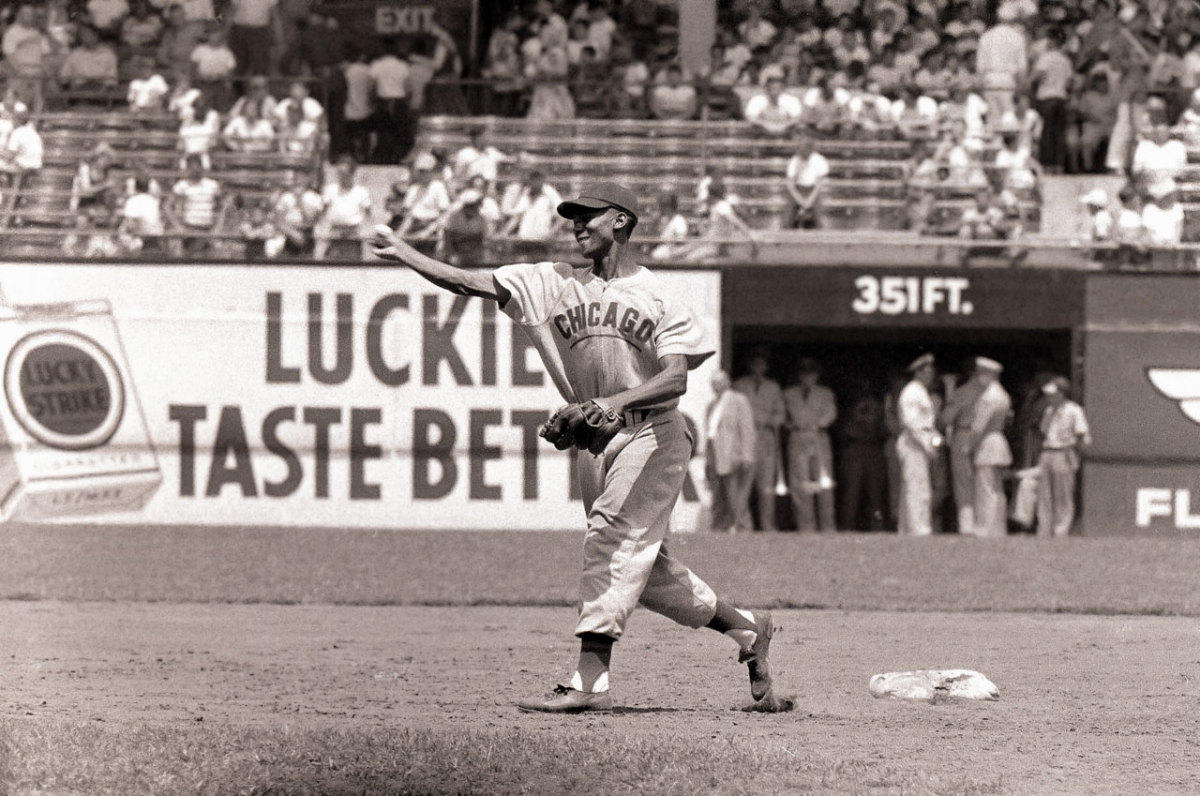
1955
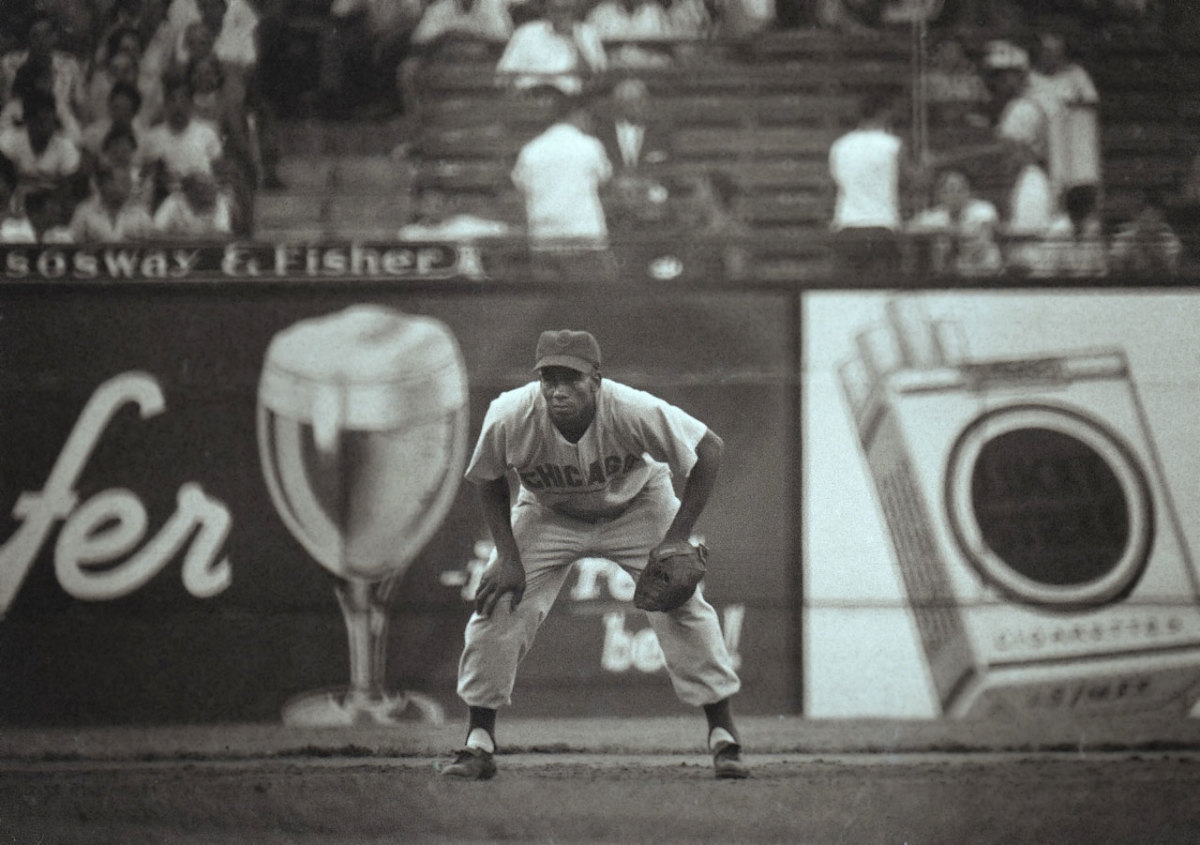
1956
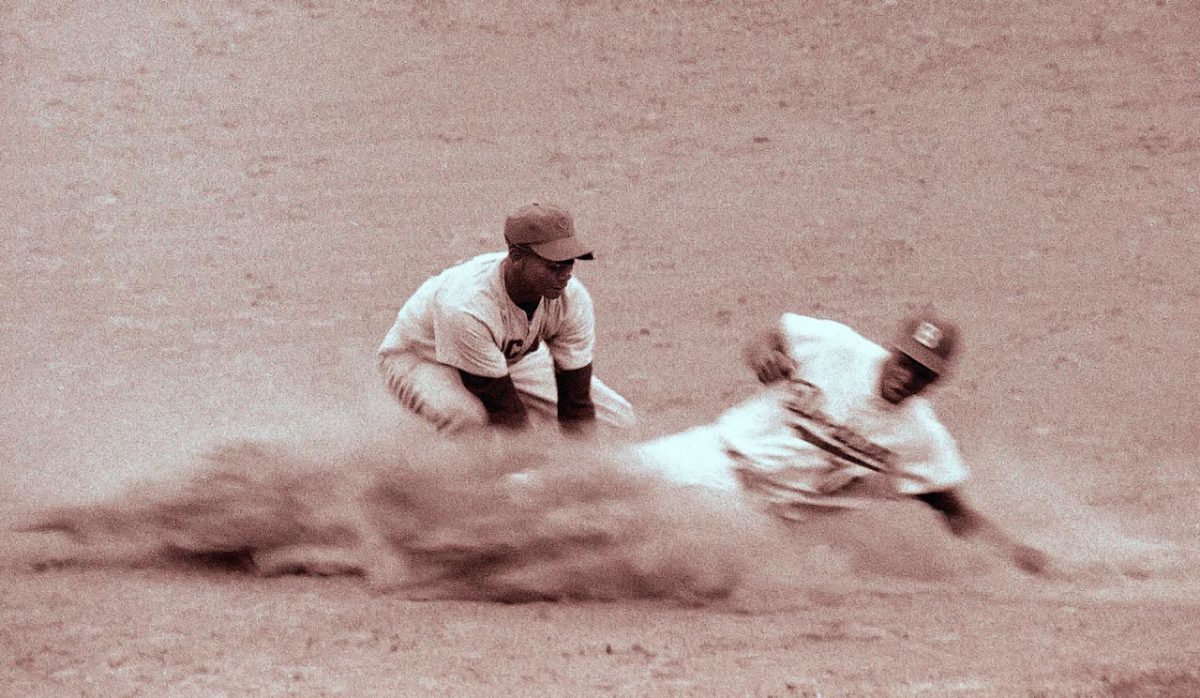
Ernie Banks makes the tag on Jim Gilliam of the Brooklyn Dodgers.
1962
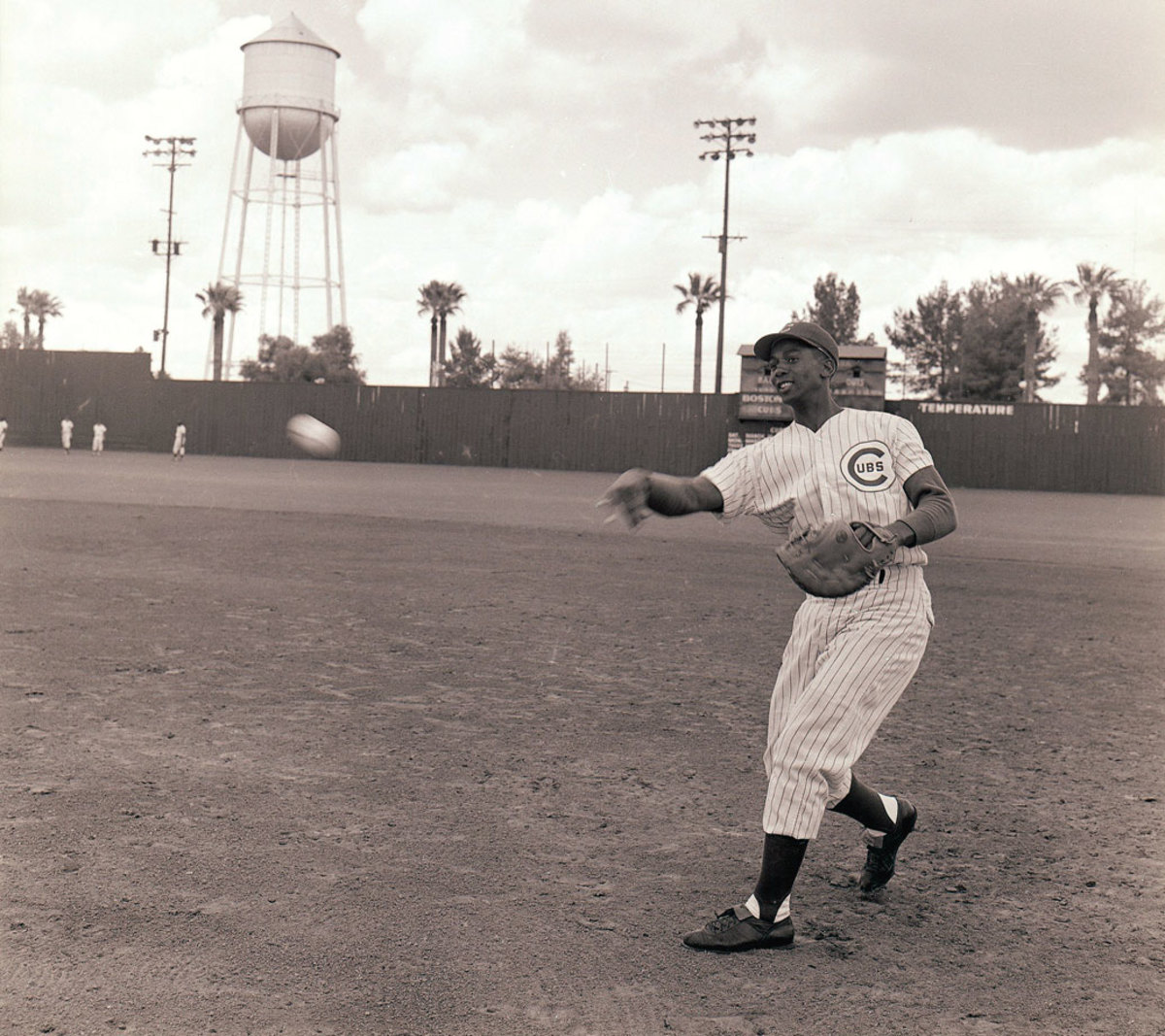
1962
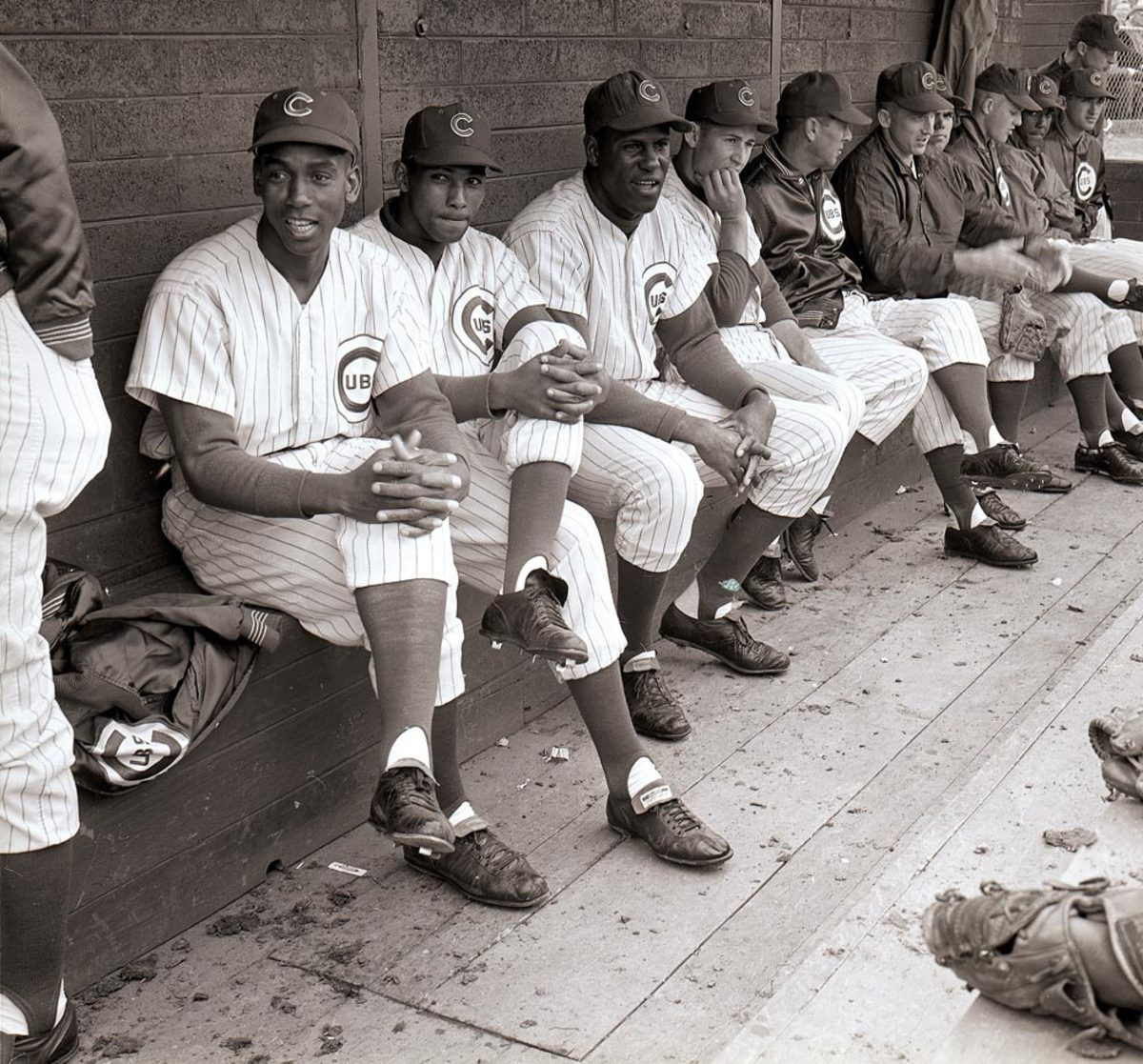
Ernie Banks sits with Billy Williams, George Altman and Ron Santo in the dugout.
1964
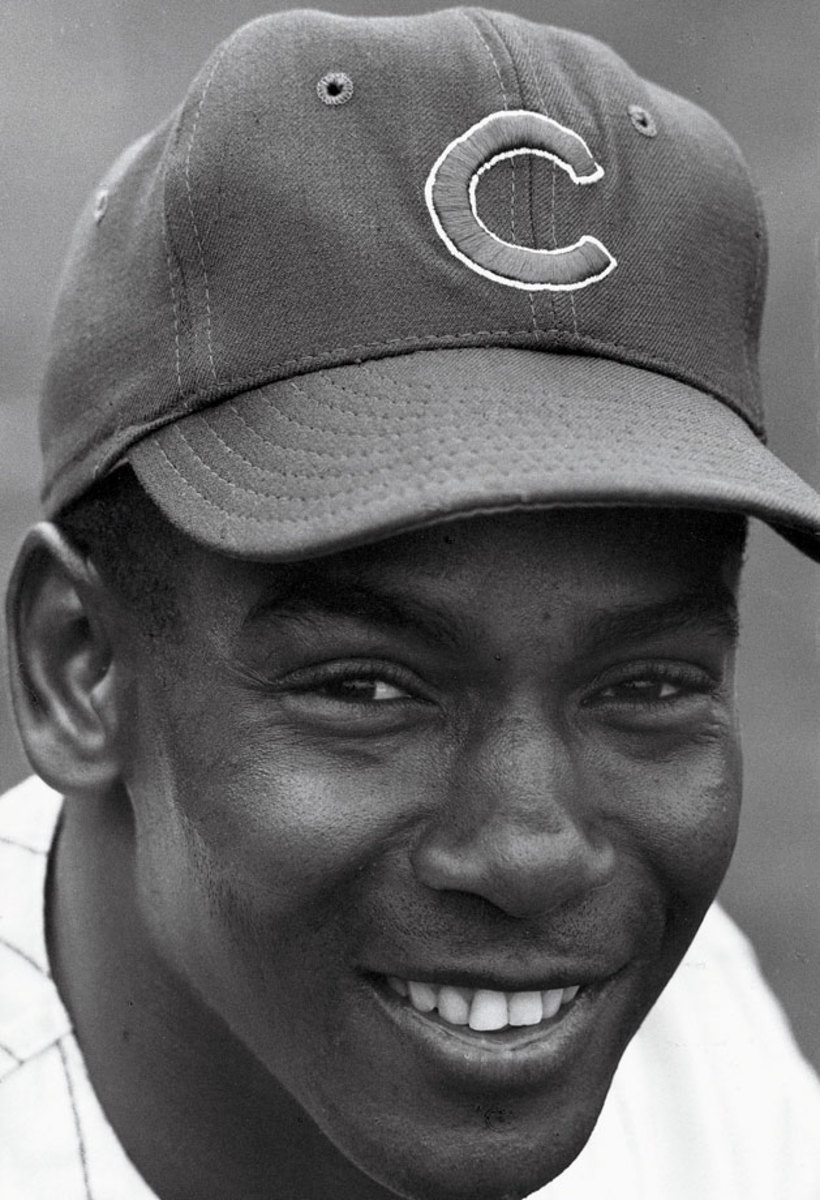
1969
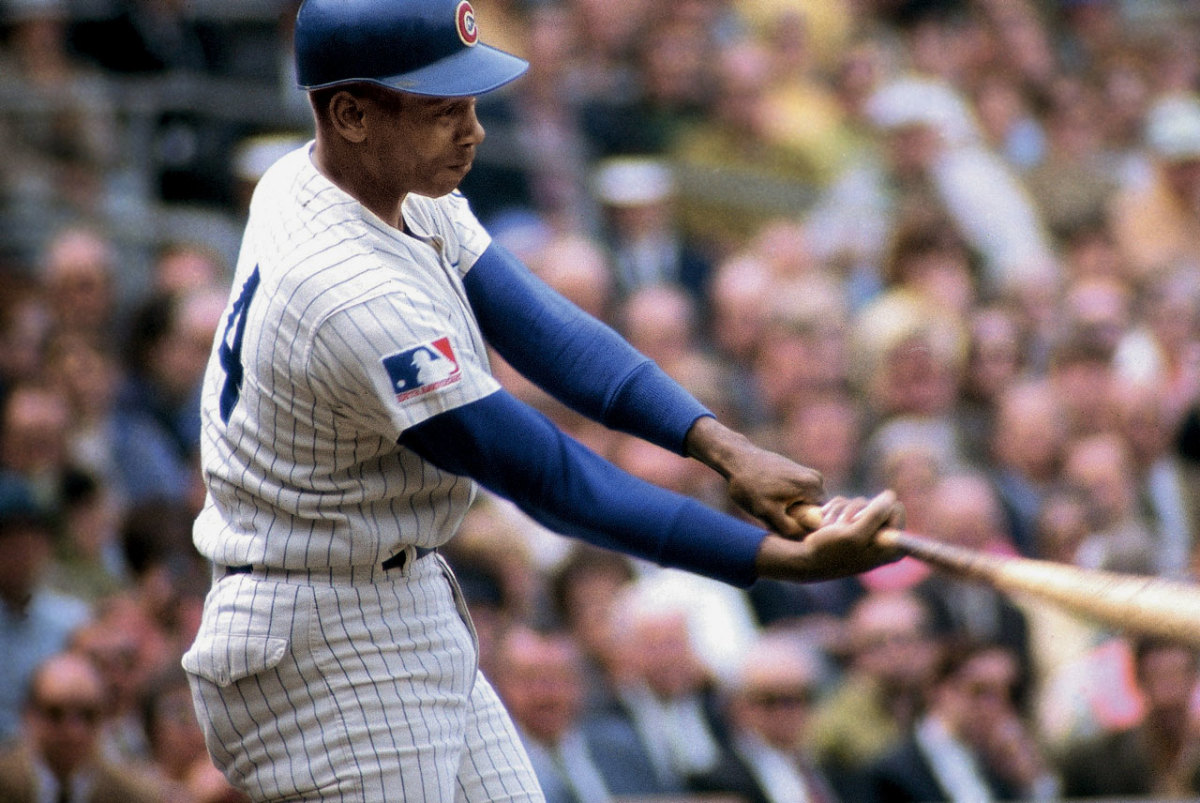
1969
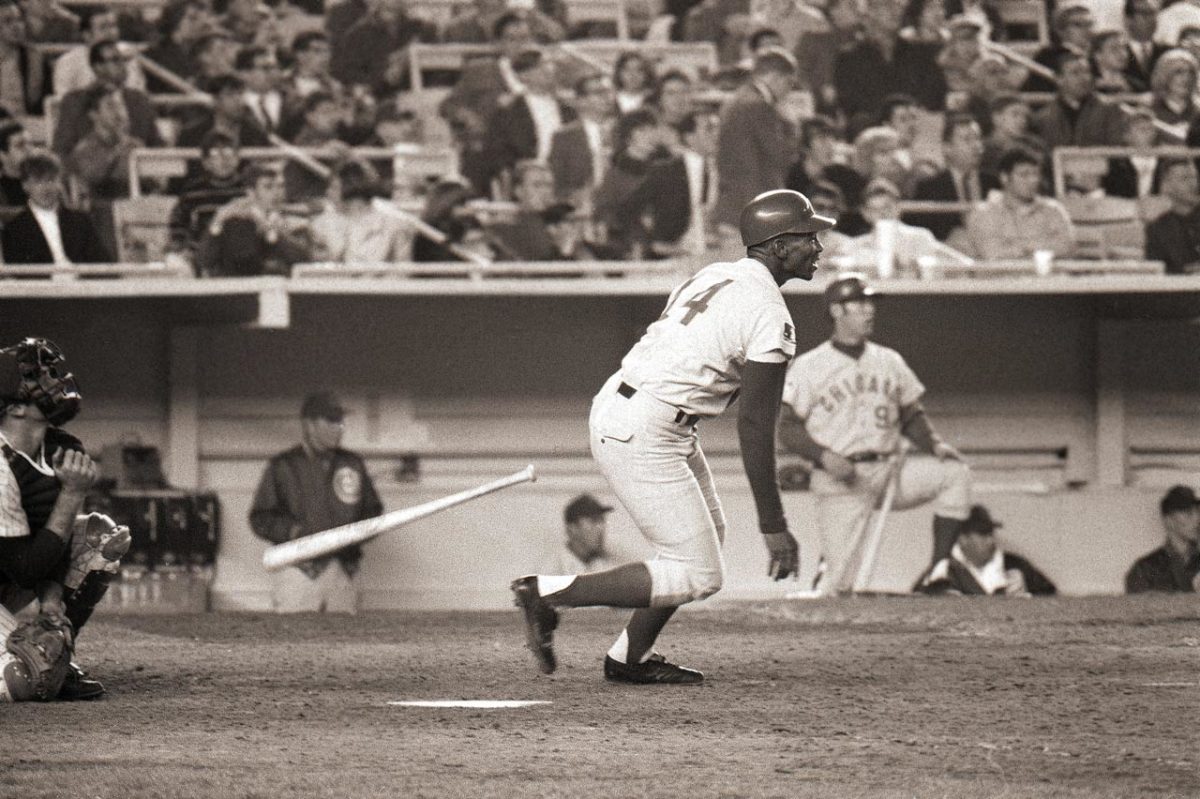
1969
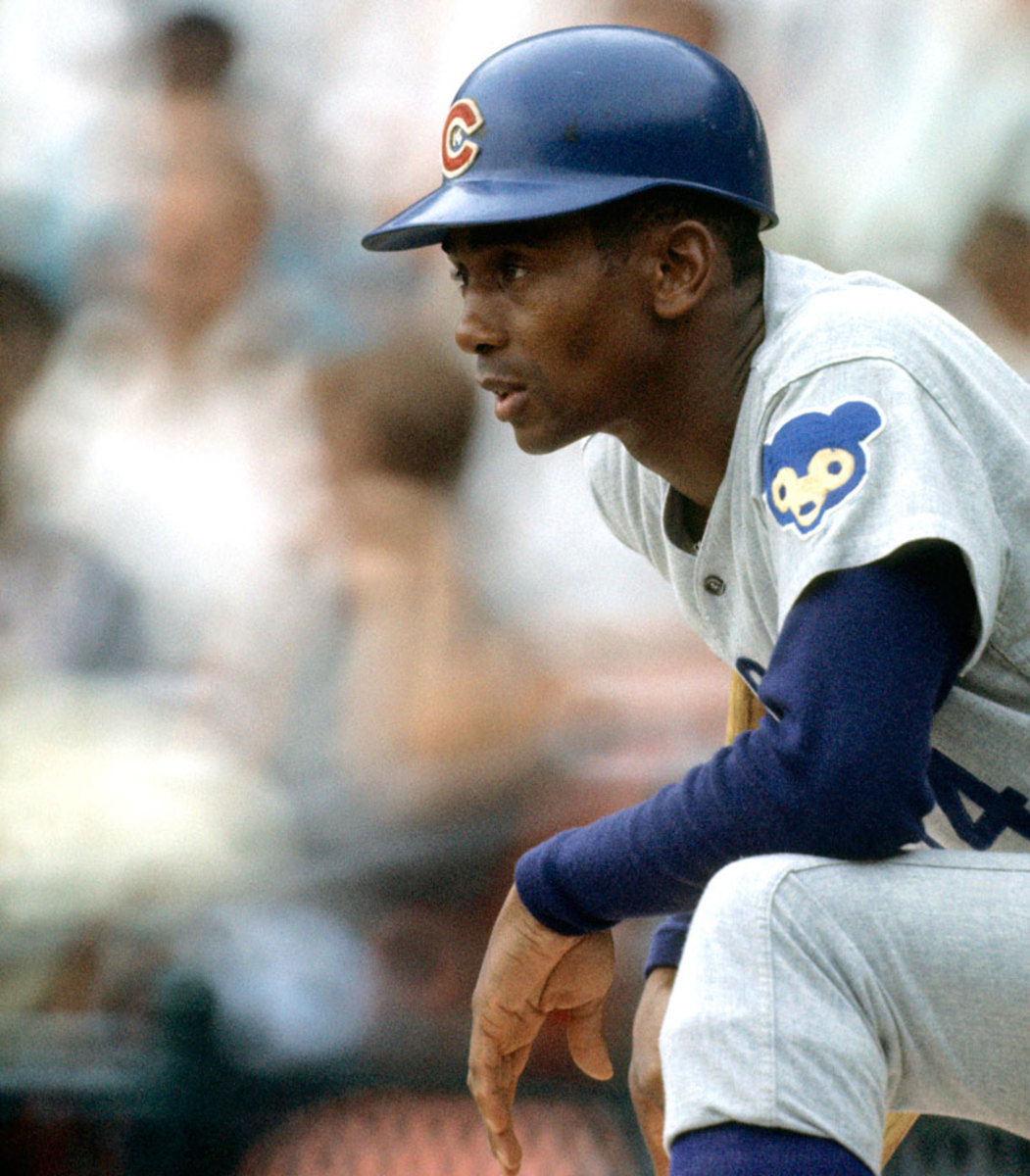
1969
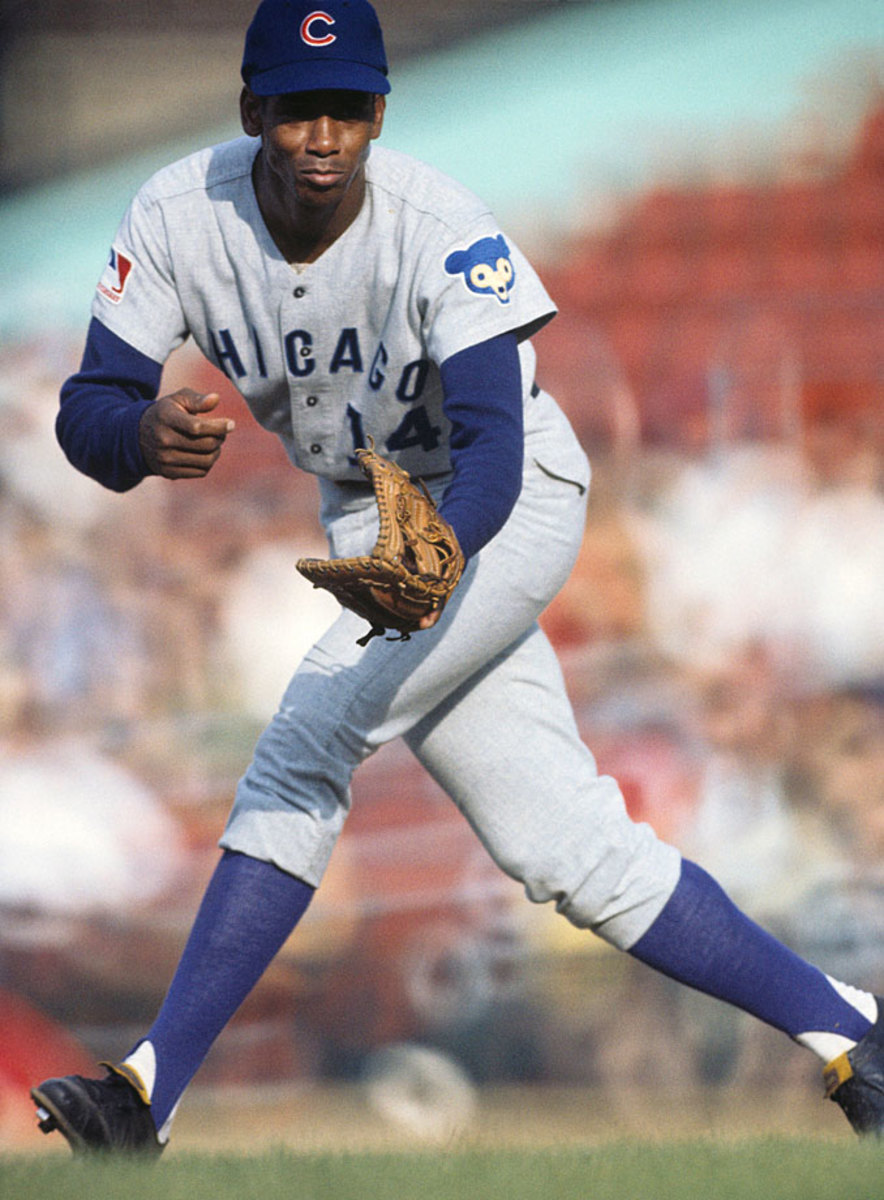
1969
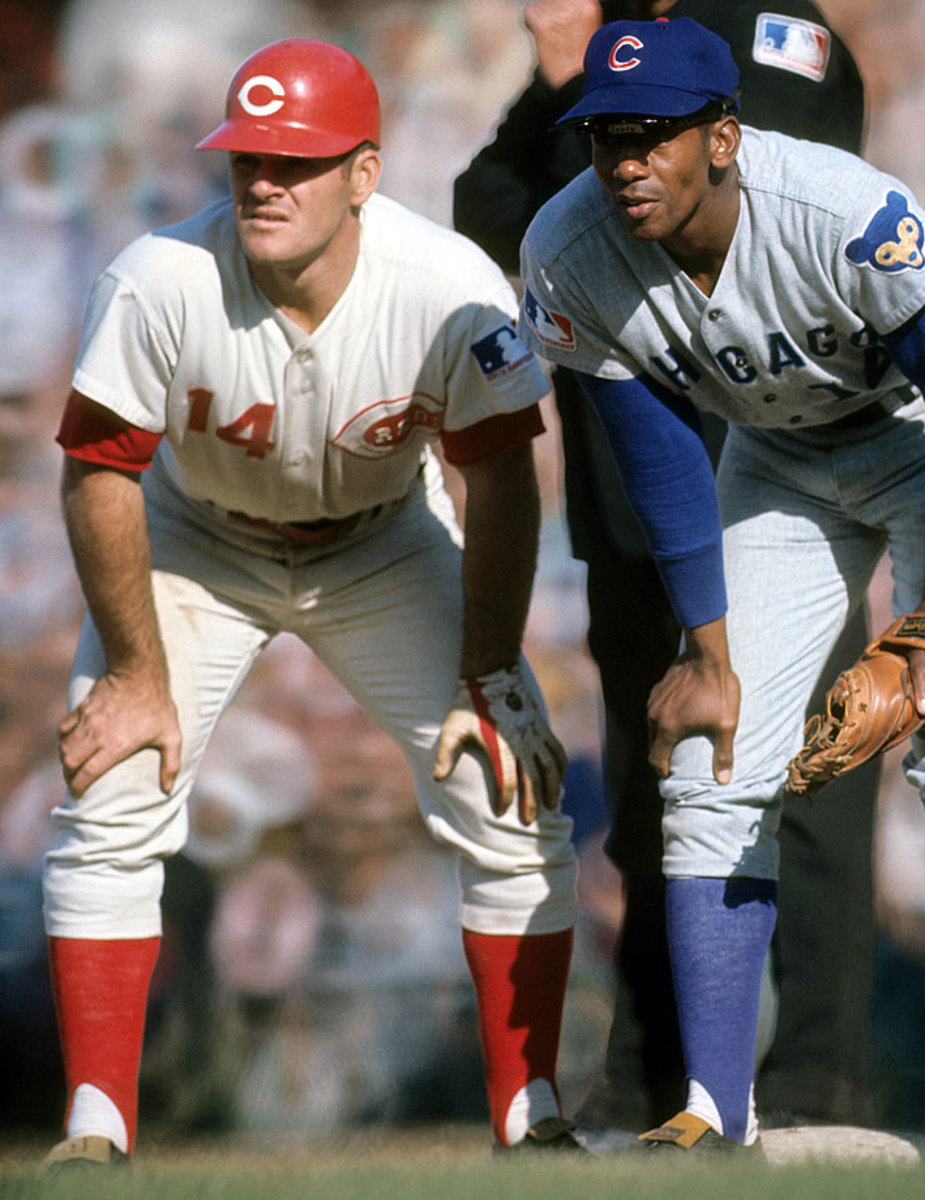
Ernie Banks and Pete Rose on first base.
1969
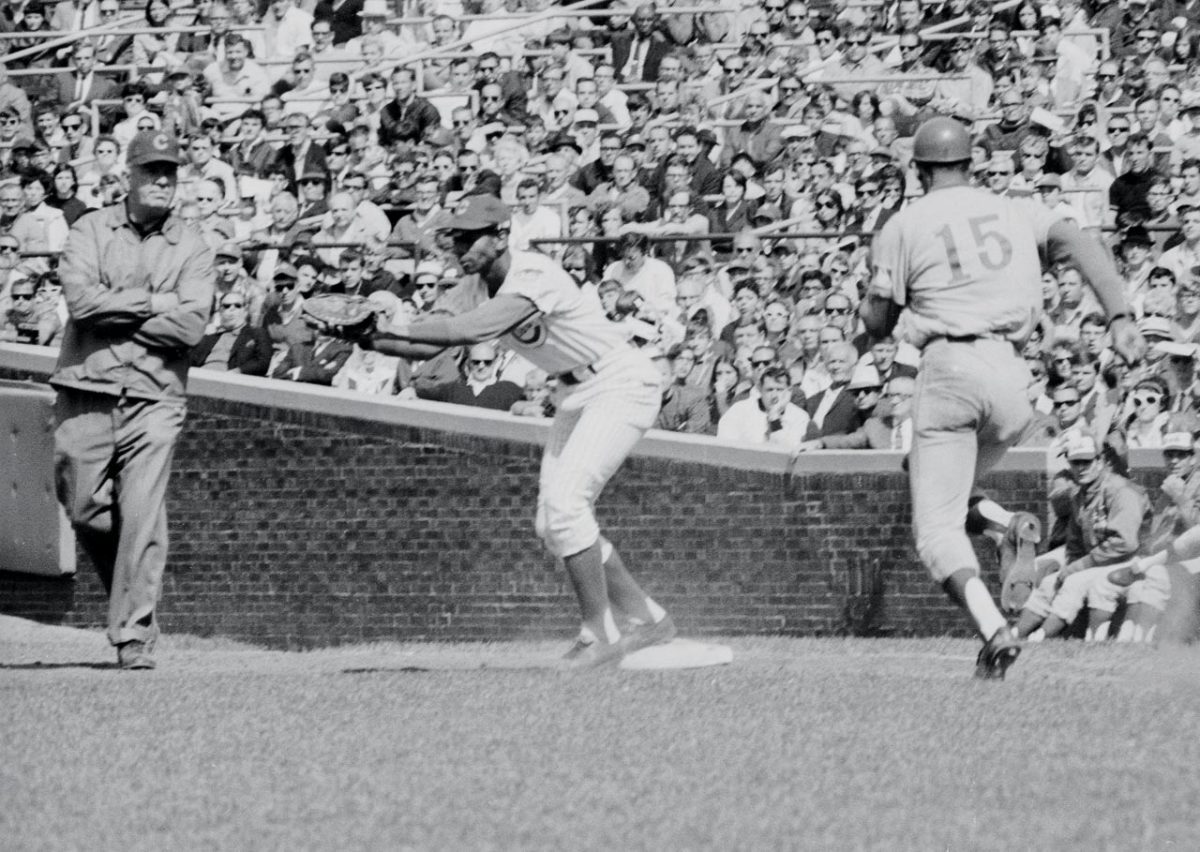
Ernie Banks catches a throw to first for an out on Manny Mota.
1969
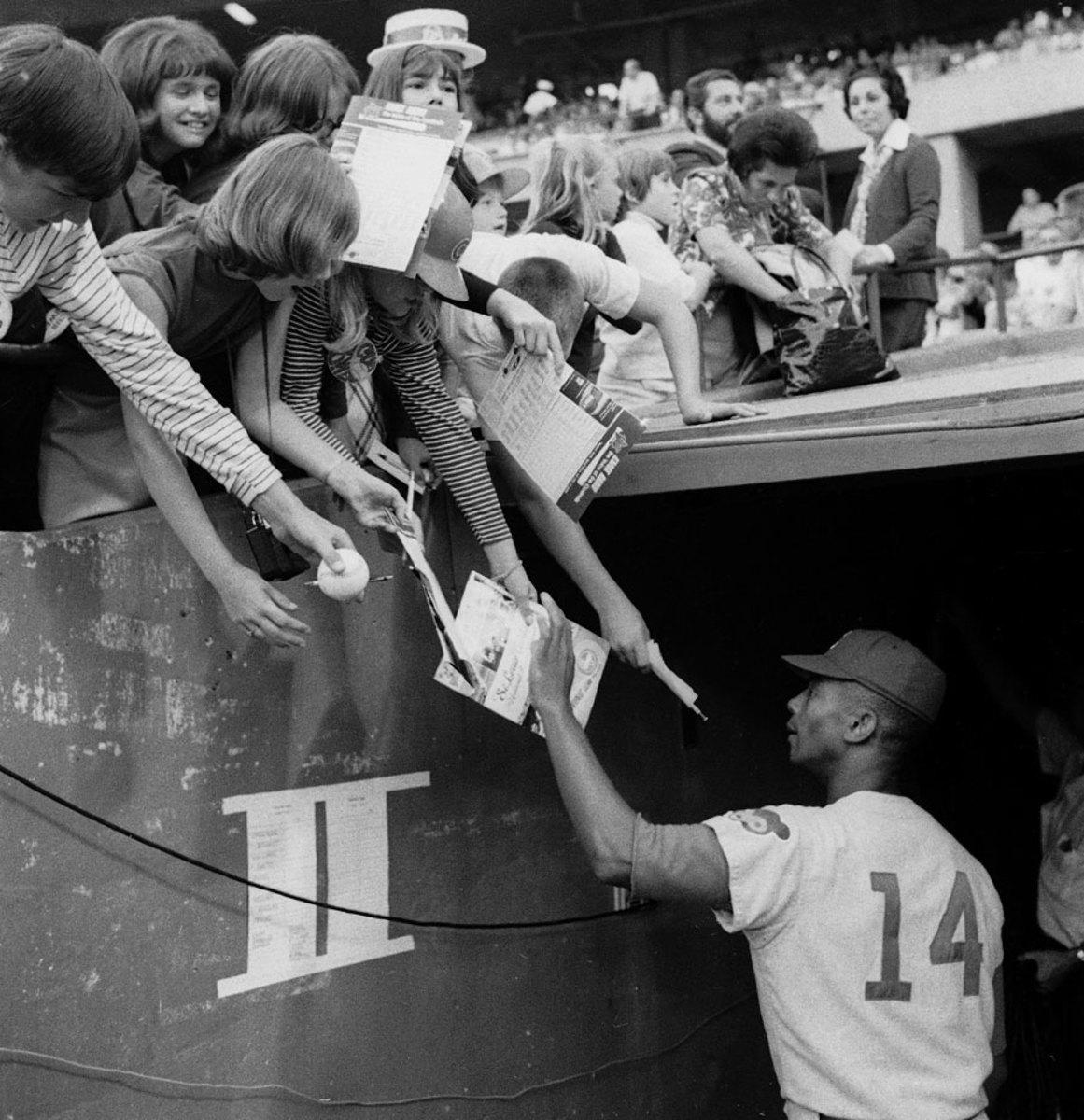
1970
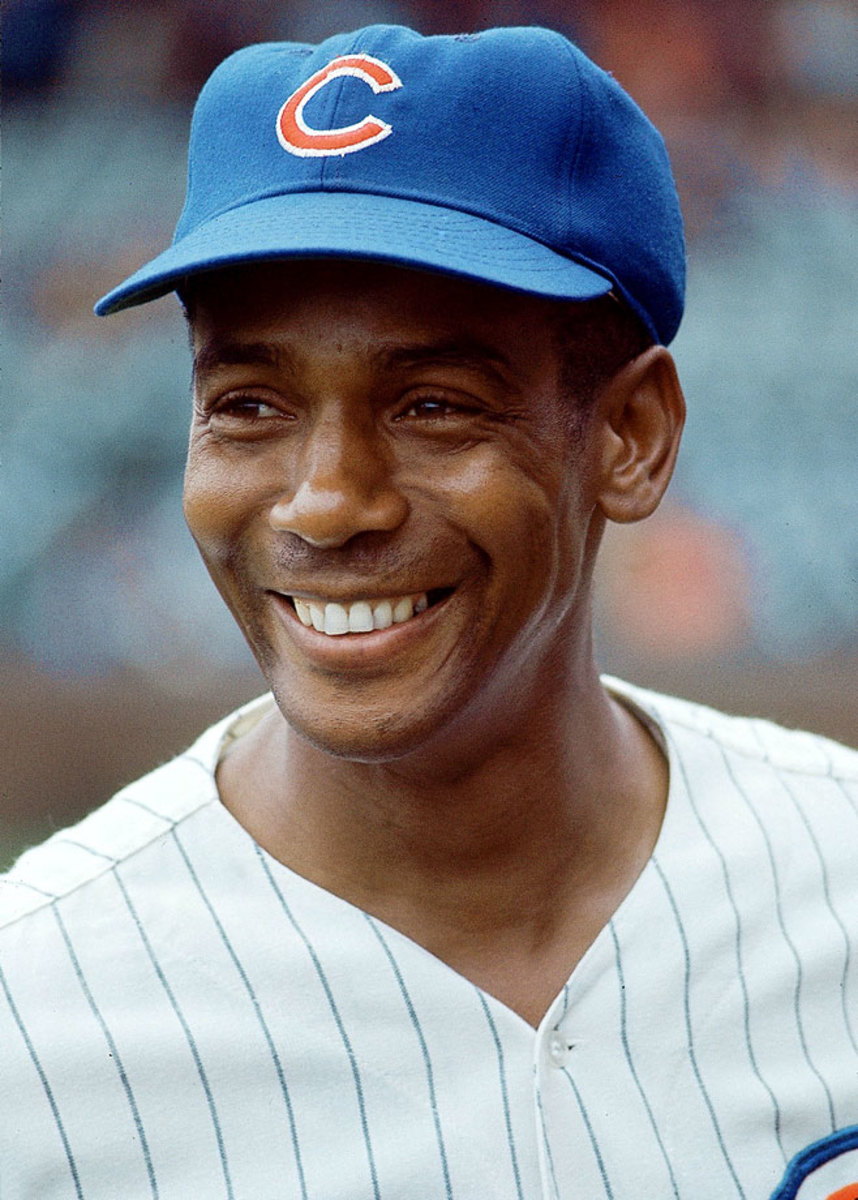
1995
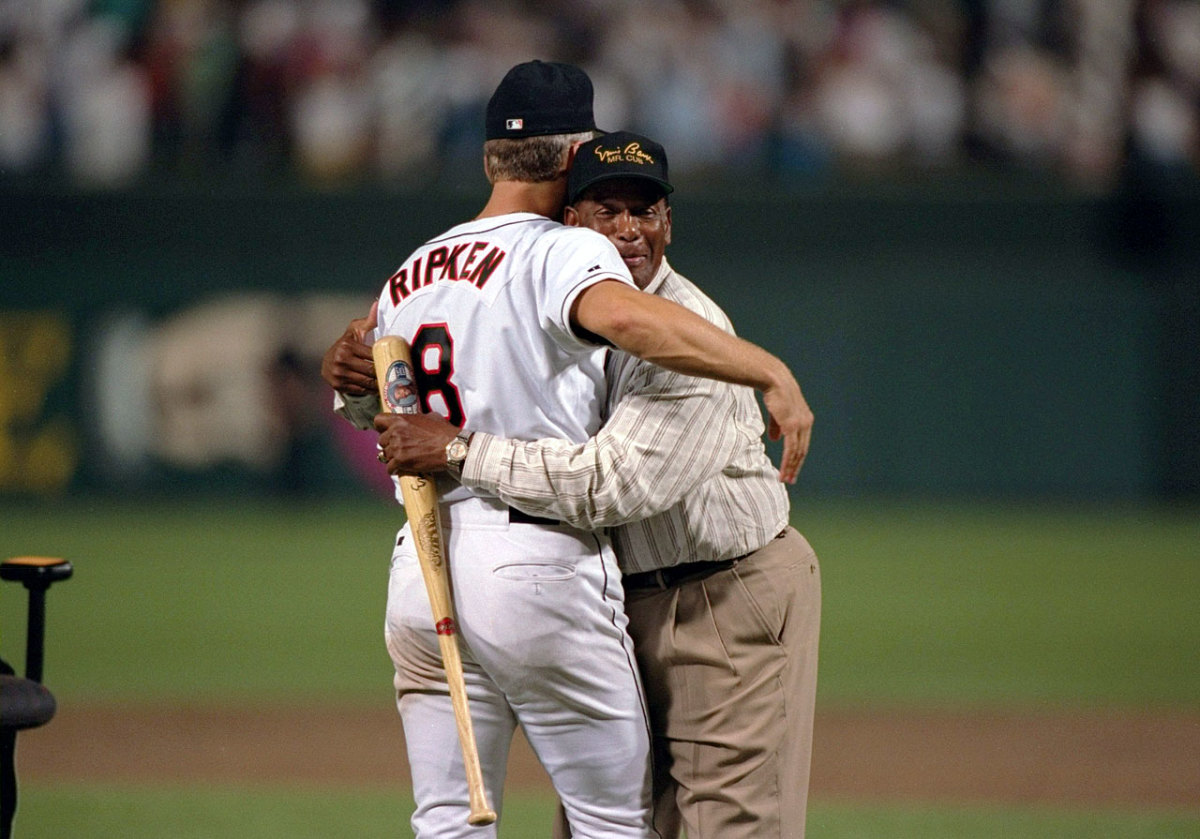
Ernie Banks hugs Cal Ripken Jr. after Ripken tied Lou Gehrig's record of 2,130 consecutive games played.
1996
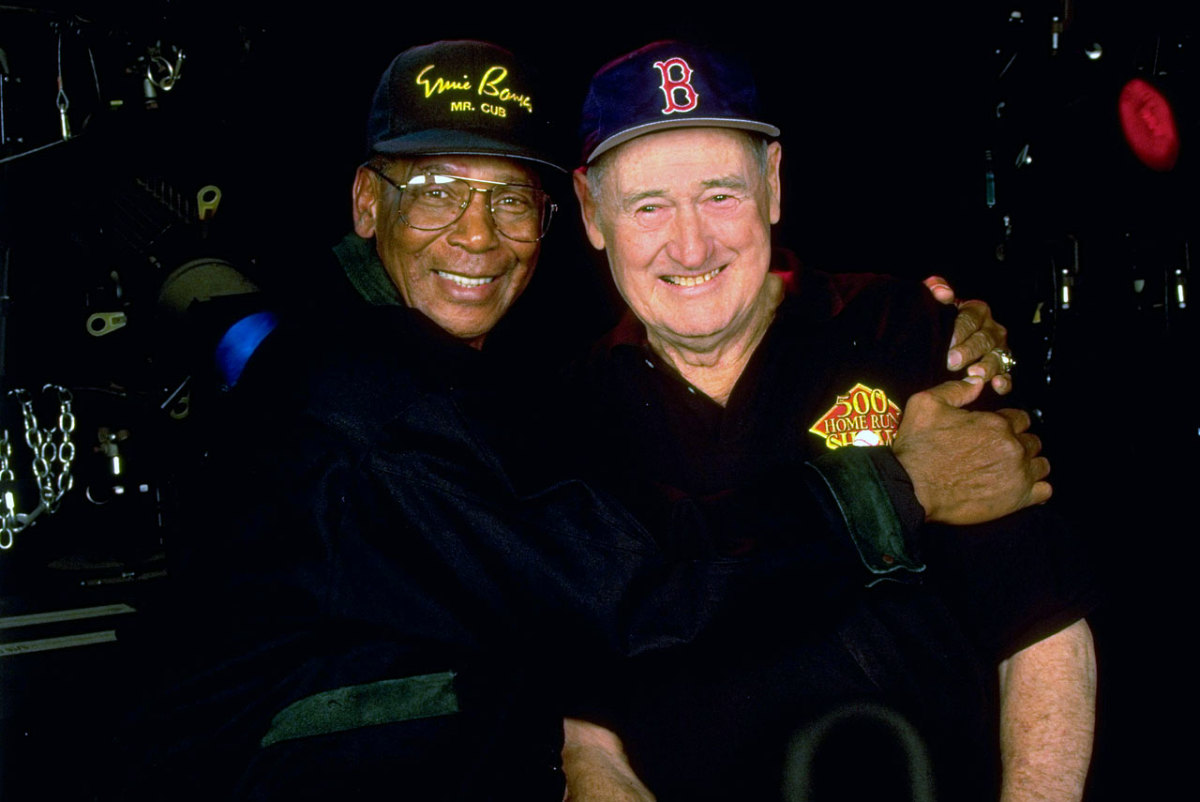
Ernie Banks hugs Ted Williams during the 500-hitters reunion.
1999 All-Star Game
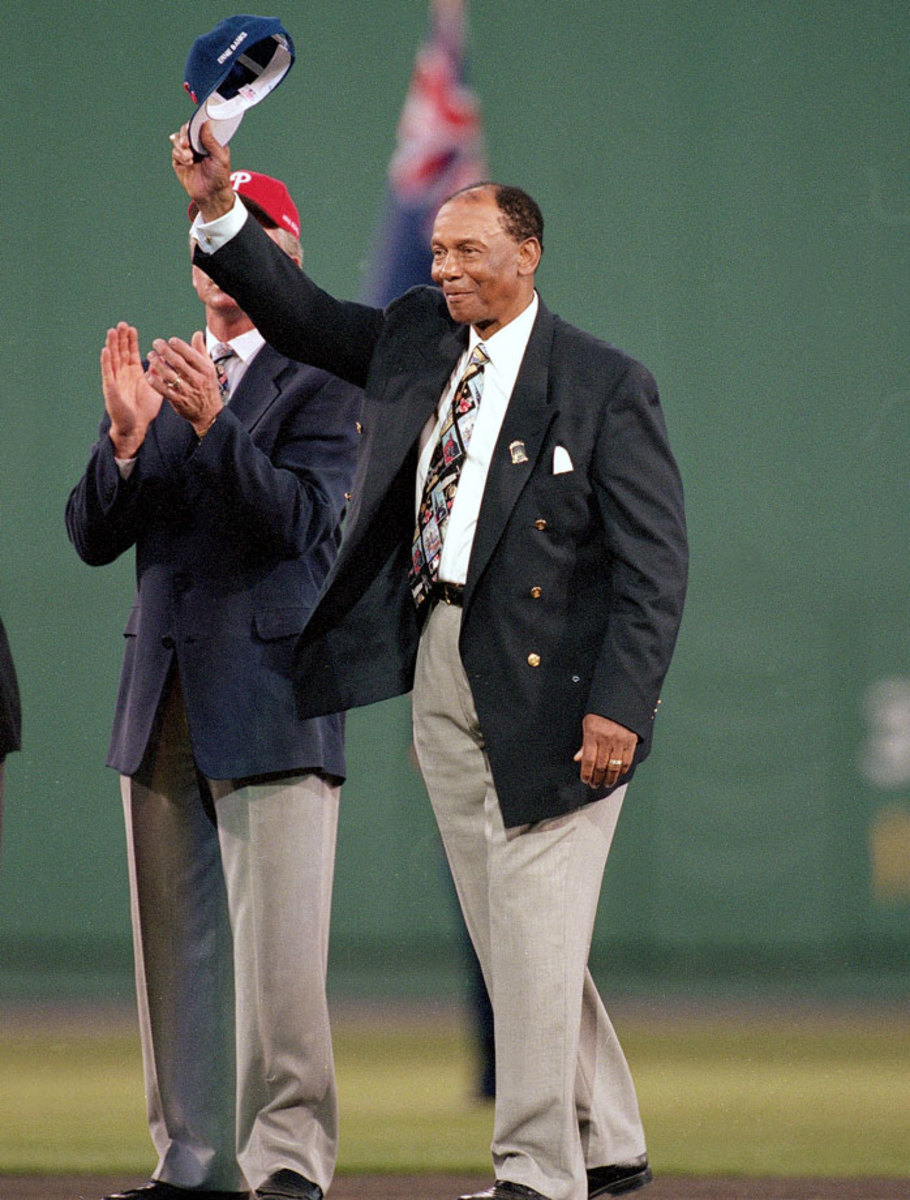
2001
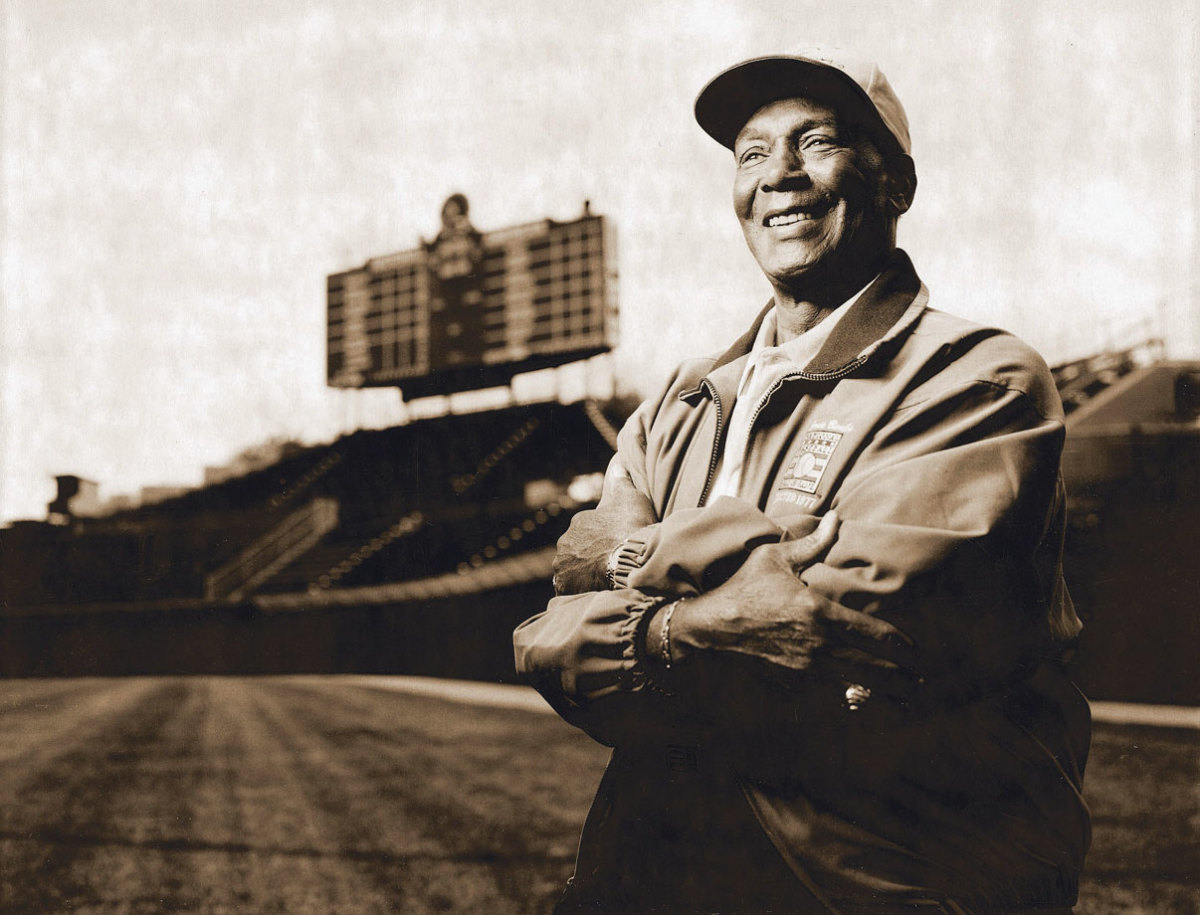
2004
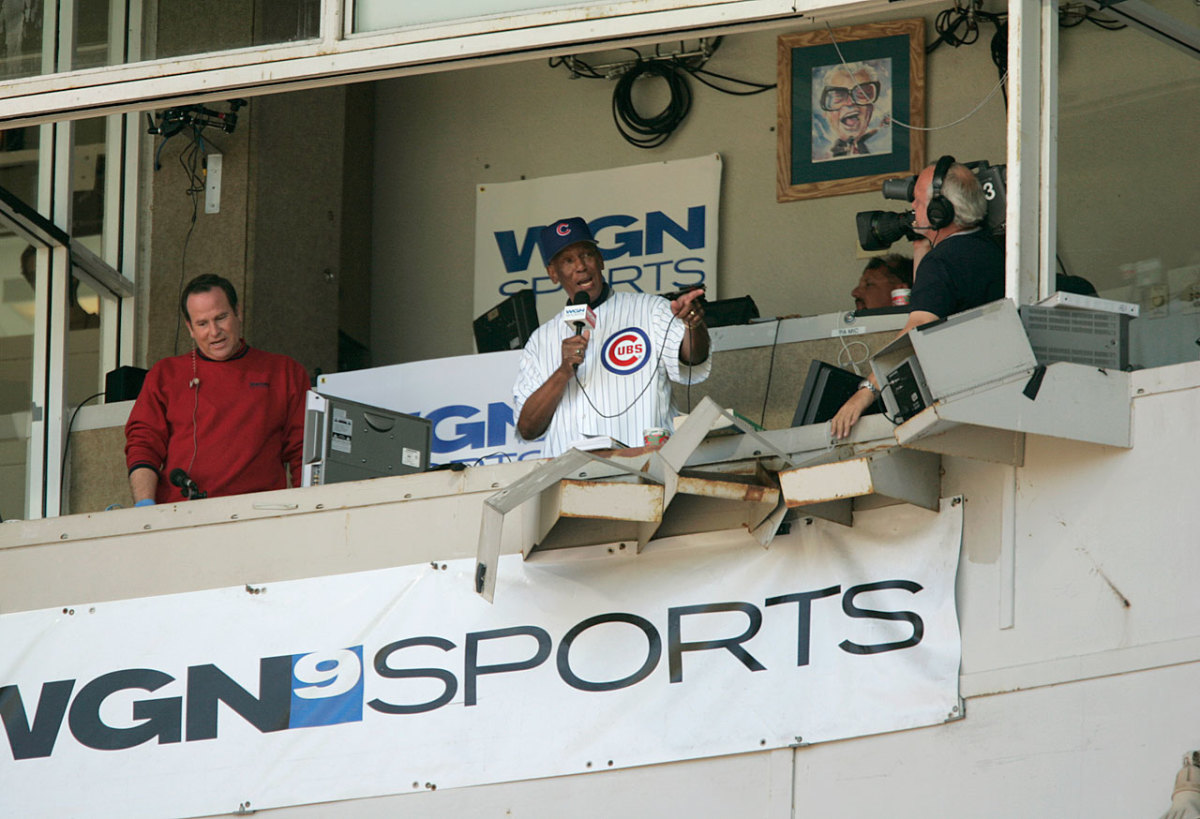
2007 NLDS
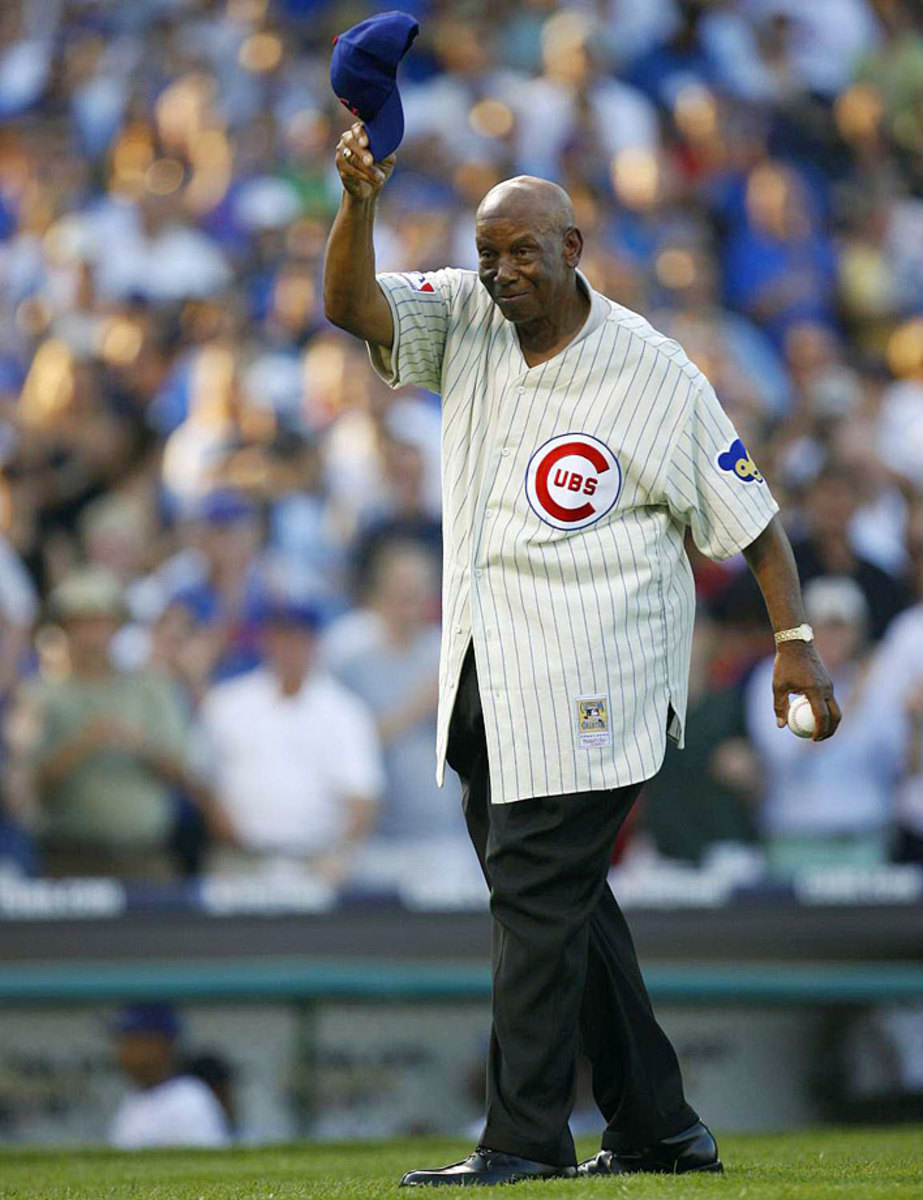
2014
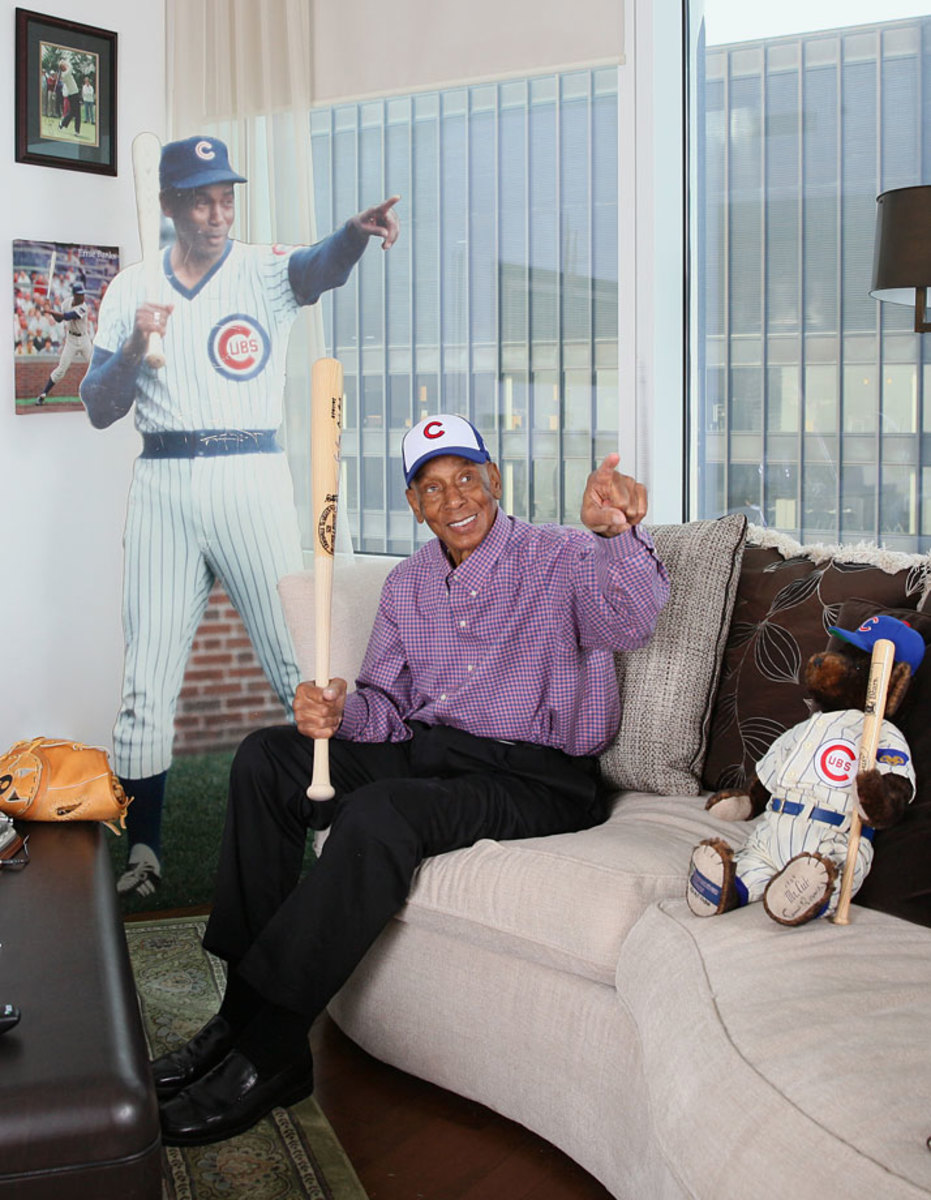
2014
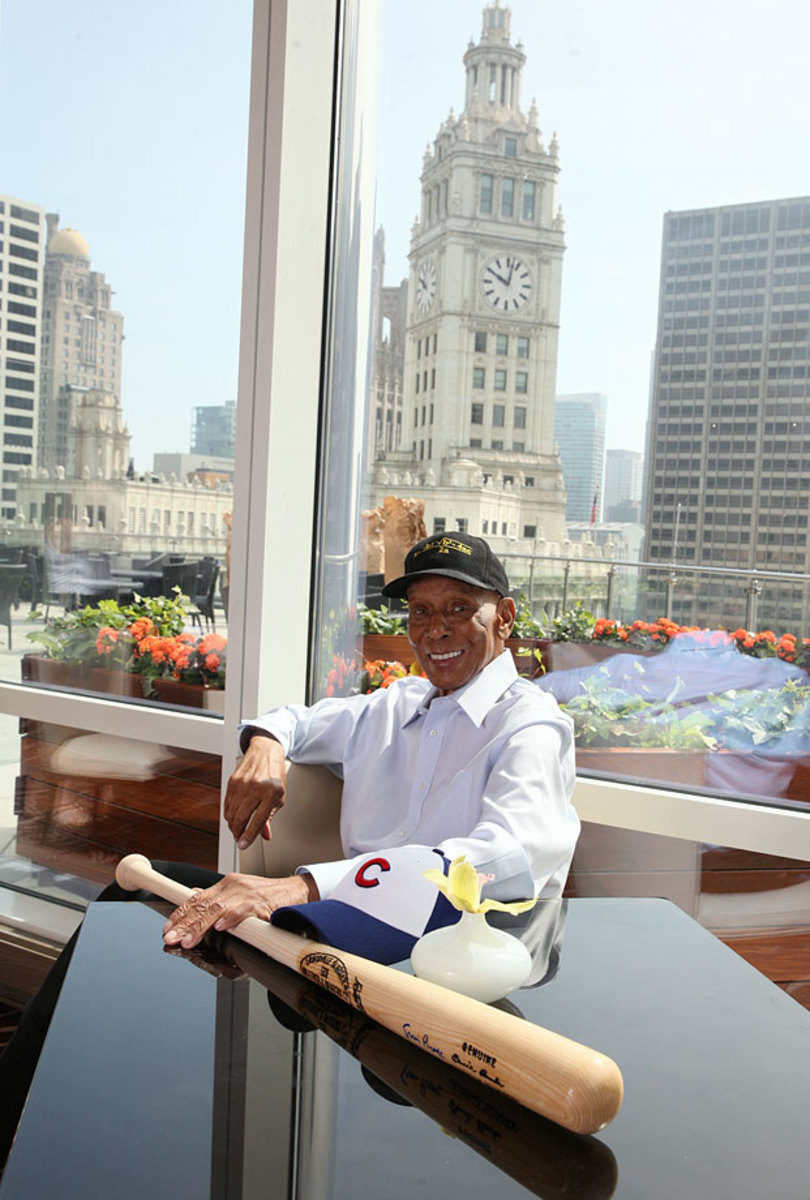
2014
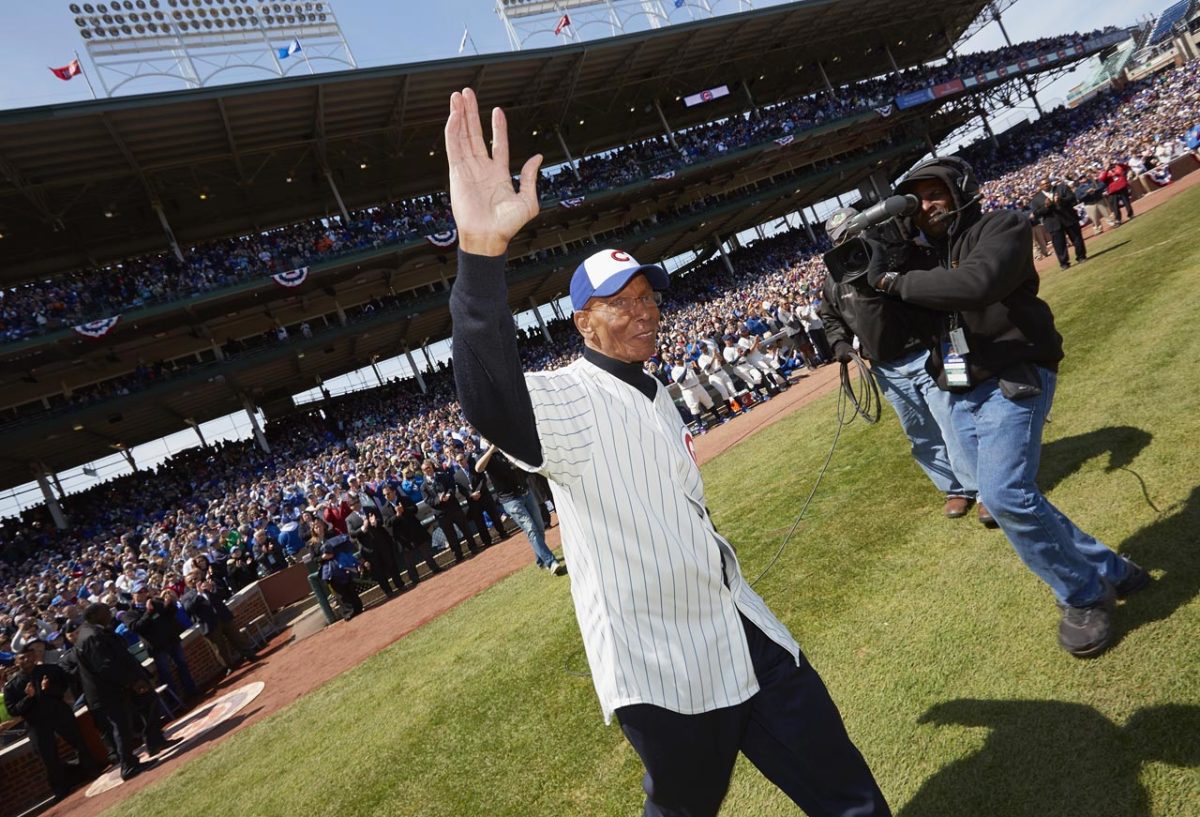
Ernie Banks Statue at Wrigley Field
